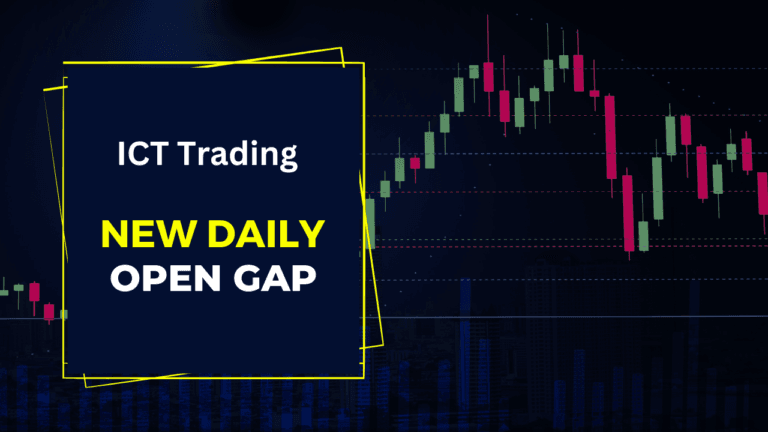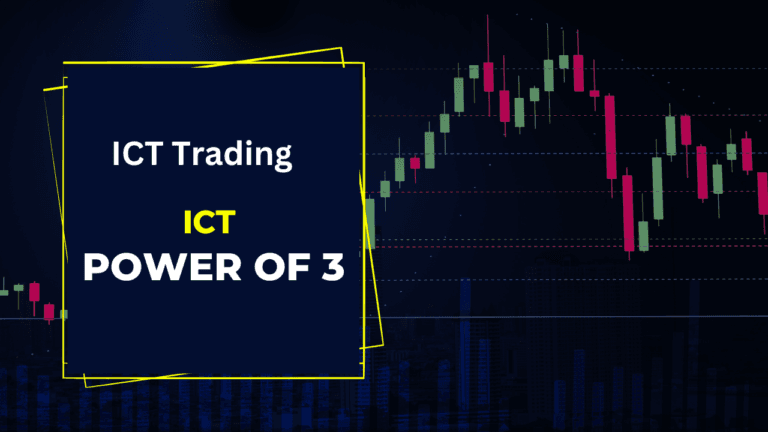SMT ICT – Essential Insights for Traders

In the world of trading, understanding Smart Money Techniques (SMT) is crucial for those looking to improve their strategies. This article focuses on SMT ICT (Inner Circle Trading), a method that helps traders identify the actions of institutional investors. By grasping the principles of SMT, traders can enhance their decision-making processes and achieve better results. In this article, we’ll explore the concept of SMT in the context of ICT, discussing its principles, applications, and common pitfalls to avoid.
Introduction to SMT ICT
SMT ICT refers to the application of Smart Money Techniques within the framework of Inner Circle Trading. This method emphasizes the importance of understanding how institutional traders operate in the financial markets. Unlike retail traders, who often rely on technical indicators and patterns, institutional traders have access to more resources and information, giving them a significant edge.
SMT ICT in Inner Circle Trading
At the heart of SMT ICT is the idea that institutional trading patterns dictate market movements. By understanding these patterns, traders can align their strategies with the actions of institutional players. Here are some key components that define SMT ICT
Market Structure
Market structure refers to the way prices move in a market. It consists of higher highs and higher lows in an uptrend, or lower highs and lower lows in a downtrend. Understanding market structure helps traders identify trends and potential reversal points.
Order Flow
Order flow represents the buying and selling activity in the market. By analyzing order flow, traders can gain insights into market sentiment. If there is significant buying pressure, it indicates that institutions are likely entering the market, which can lead to price increases. Conversely, heavy selling can indicate institutional exits. Understanding order flow is essential for traders to gauge when to enter or exit positions.
Conclusion
By following the guidelines provided in this article, we have explored the foundational aspects of SMT ICT (Inner Circle Trading). As you continue your journey in trading, remember that understanding Smart Money Techniques can significantly enhance your ability to navigate the market effectively.
The Core Principles of SMT ICT
To effectively implement SMT ICT (Inner Circle Trading), it’s essential to understand its core principles. These principles provide a solid foundation for recognizing institutional behavior and market dynamics. Here are the three fundamental components of SMT ICT:
Market Structure
- Higher Highs and Higher Lows: In a bullish market, prices create higher highs and higher lows. Recognizing this pattern signals that institutions are likely accumulating positions, leading to further price increases.
- Lower Highs and Lower Lows: Conversely, in a bearish market, prices establish lower highs and lower lows. This indicates that institutions may be distributing their holdings, suggesting potential price declines.
Order Flow
- Analyzing Buy and Sell Orders: Traders should monitor the volume of buy and sell orders. A surge in buy orders indicates strong demand, often leading to price increases, while heavy sell orders suggest a potential price drop.
- Recognizing Support and Resistance Levels: Order flow can help identify key support and resistance levels. When prices approach these levels with significant volume, it indicates that institutions are likely participating in the market, either entering or exiting positions.
Liquidity
- High Liquidity Areas: These are price levels where a large number of buy and sell orders exist. Institutions often target these areas to enter or exit positions. Recognizing high liquidity zones can help traders anticipate price reversals or continuations.
- Low Liquidity Areas: Conversely, low liquidity areas can lead to rapid price movements. When institutional orders enter or exit in these zones, it may cause significant price fluctuations, creating trading opportunities.
How to Use SMT ICT in Trading
Implementing SMT ICT in your trading strategy requires a systematic approach. Here’s a step-by-step guide to help you effectively use SMT ICT in your trading:
Analyze Market Structure
Begin by examining the market structure to identify trends and potential reversal points. Use charting tools to:
- Identify higher highs and higher lows in uptrends.
- Look for lower highs and lower lows in downtrends.
- Mark key support and resistance levels based on previous price movements.
Monitor Order Flow
Next, focus on monitoring order flow to gain insights into market sentiment. Utilize tools such as:
- Volume analysis: Look for spikes in volume that accompany price movements.
- Order books: Analyze the buy and sell orders at various price levels to understand the market’s current state.
Identify Liquidity Zones
Recognizing liquidity zones is crucial for successful trading:
- Look for areas where price has previously stalled or reversed. These are likely to be liquidity zones where institutions are active.
- Monitor price action around these zones to anticipate potential market reactions.
Develop a Trading Plan
Finally, create a comprehensive trading plan that incorporates your analysis of market structure, order flow, and liquidity:
- Define entry and exit points based on your analysis.
- Establish risk management strategies, including stop-loss and take-profit levels.
- Review and adjust your plan regularly based on market conditions and performance.
Conclusion
Implementing the core principles of SMT ICT effectively will provide you with a significant advantage in the market. Understanding market structure, order flow, and liquidity allows you to make informed decisions and develop a solid trading strategy.
Common Mistakes to Avoid with SMT ICT
When applying SMT ICT (Inner Circle Trading) principles, traders must be cautious to avoid common pitfalls that can hinder their success. Here are some frequent mistakes to watch out for:
Overlooking Market Structure
One of the most critical errors traders make is ignoring market structure. Failing to recognize the trend can lead to poor decision-making:
- Chasing Trends: Traders may enter trades based solely on recent price movements without considering the underlying market structure. This often results in chasing trends that may quickly reverse.
- Neglecting Higher Highs and Lower Lows: Not identifying higher highs and lower lows can lead to missed opportunities and false breakouts. Always analyze the broader market context before making trading decisions.
Misinterpreting Order Flow
Another common mistake is misinterpreting order flow signals:
- Reading Volume Incorrectly: Traders might mistake low volume as a sign of weak price movement. However, low volume can also indicate consolidation before a breakout. It’s essential to consider the context of the volume when making decisions.
- Ignoring Price Action: Focusing solely on order flow without considering price action can lead to misunderstandings of market dynamics. Always analyze how price reacts to order flow signals.
Failing to Recognize Liquidity Zones
Understanding liquidity zones is vital, yet many traders overlook this aspect:
- Ignoring Key Levels: Not paying attention to previous support and resistance levels can result in missed trading opportunities. Liquidity often builds around these levels, so traders should monitor price action closely.
- Entering Trades in Low Liquidity Areas: Trading in low liquidity zones can expose traders to high volatility and slippage. Always prefer to trade around established liquidity zones to minimize risks.
Neglecting Risk Management
A crucial mistake that can lead to significant losses is neglecting risk management:
- Not Setting Stop-Loss Orders: Traders sometimes enter trades without setting stop-loss orders, exposing themselves to unlimited risk. Always define a clear exit strategy to protect your capital.
- Overleveraging Positions: Using excessive leverage can amplify losses. It’s essential to assess your risk tolerance and only use leverage that aligns with your trading strategy.
Conclusion
In conclusion, understanding and applying SMT ICT (Inner Circle Trading) can greatly enhance a trader’s ability to navigate the complexities of the financial markets. By grasping the core principles of market structure, order flow, and liquidity, traders can align their strategies with the actions of institutional players, improving their chances of success.
Read More ICT Macro Times – A Quick Guide
Frequently Asked Questions
What is SMT in Inner Circle Trading?
SMT, or Smart Money Techniques, refers to strategies used by traders to identify the actions of institutional investors in the market. In the context of Inner Circle Trading (ICT), it emphasizes understanding how these larger players influence price movements, helping retail traders align their strategies accordingly
How can I identify market structure in my trading?
To identify market structure, traders should look for patterns of higher highs and higher lows in an uptrend, and lower highs and lower lows in a downtrend. Analyzing price charts over different time frames can help clarify these structures and highlight potential trend reversals.
What tools can I use to analyze order flow?
Traders can use several tools to analyze order flow, including:
- Volume indicators: These help identify spikes in buying or selling activity .Order books: Monitoring real-time buy and sell orders can provide insights into market sentiment. Tick charts: These charts display price movements based on the number of transactions, allowing traders to visualize order flow more effectively.
Why is liquidity important in trading?
Liquidity is crucial because it determines how easily an asset can be bought or sold without significantly affecting its price. Trading in high liquidity areas helps minimize slippage and allows traders to enter and exit positions with greater ease. Understanding liquidity zones can also help identify potential price reversals or continuations.
What are some common mistakes traders make with SMT ICT?
Some common mistakes include:
- Overlooking market structure and entering trades based on recent price movements without proper analysis.
- Misinterpreting order flow signals, such as reading low volume incorrectly.
- Failing to recognize liquidity zones, leading to trades in low liquidity areas.
- Neglecting risk management strategies, like not setting stop-loss orders or using excessive leverage.
How can I improve my trading skills with SMT ICT?
To improve your trading skills with SMT ICT, consider the following steps:
- Educate yourself: Continuously learn about market dynamics, SMT principles, and effective trading strategies.
- Practice regularly: Use demo accounts or paper trading to apply SMT principles without financial risk.
- Review your trades: Analyze your past trades to identify what worked and what didn’t, adjusting your strategies accordingly.
- Join trading communities: Engage with other traders who focus on SMT ICT to share insights and strategies.





